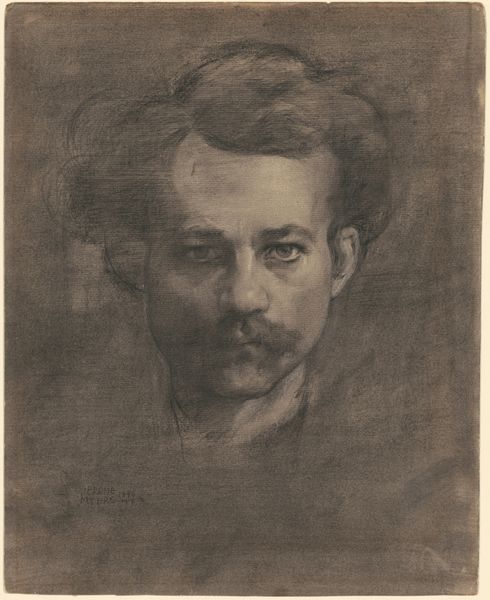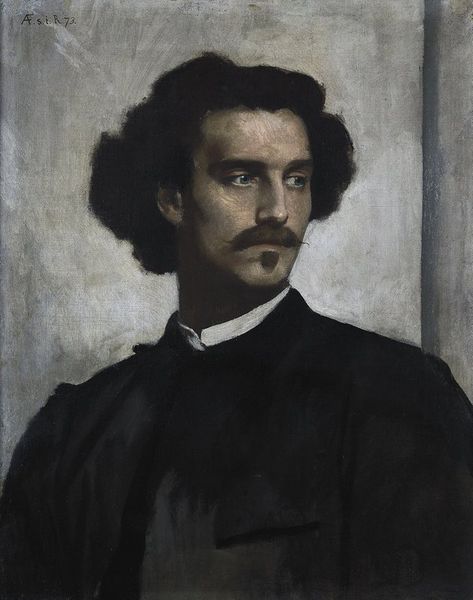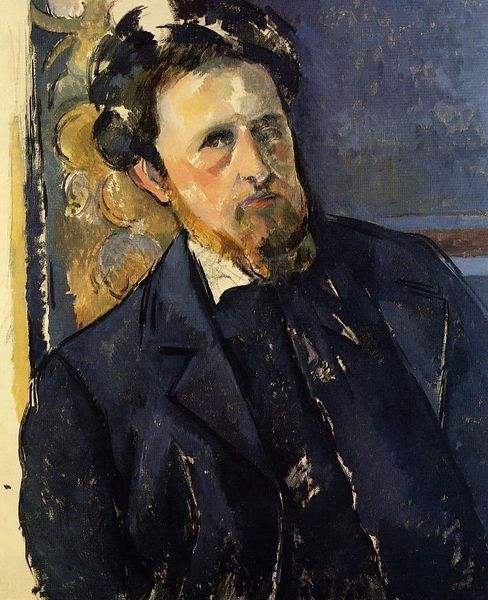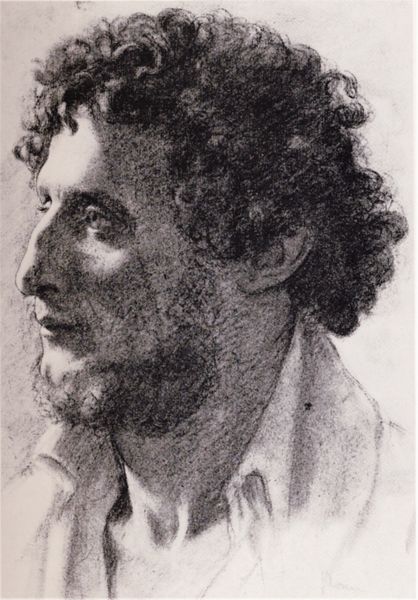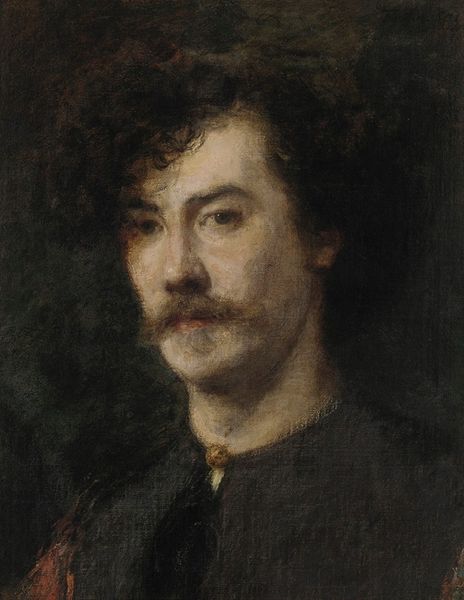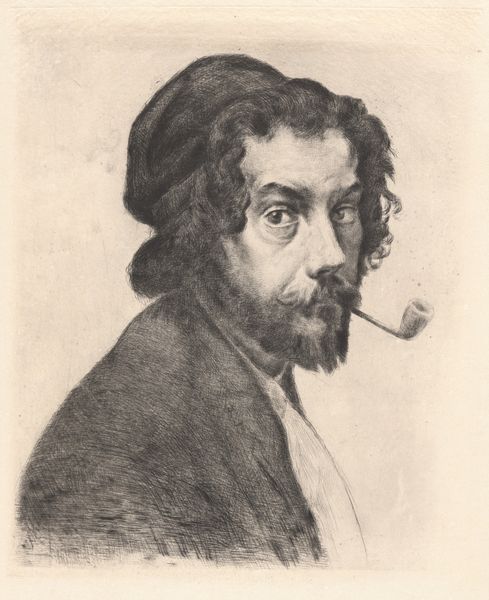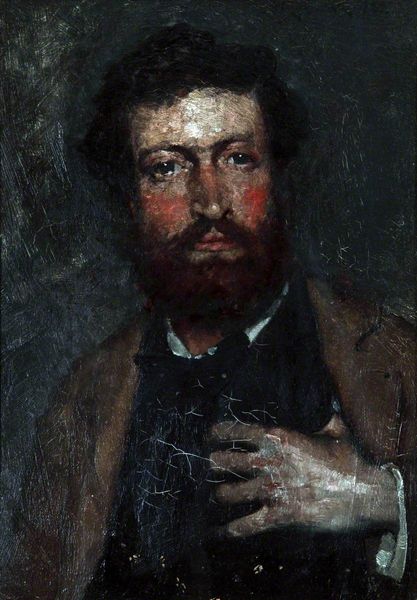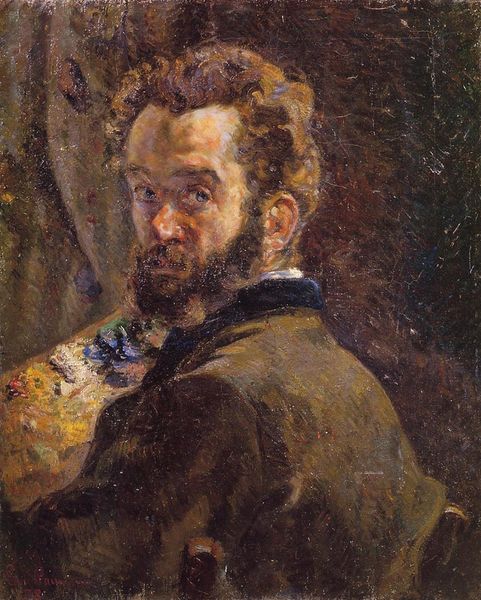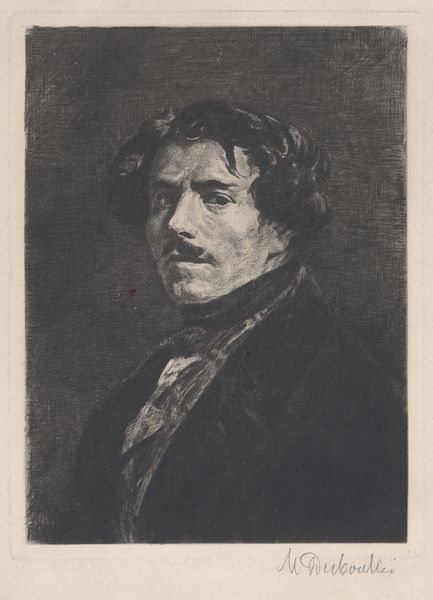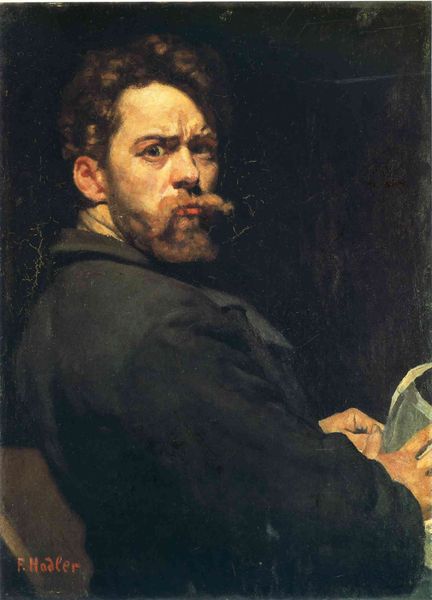
painting, oil-paint
#
portrait
#
figurative
#
portrait image
#
portrait
#
painting
#
oil-paint
#
figuration
#
portrait reference
#
portrait head and shoulder
#
romanticism
#
animal drawing portrait
#
portrait drawing
#
history-painting
#
facial portrait
#
portrait art
#
fine art portrait
#
digital portrait
Copyright: Public Domain: Artvee
Curator: Here we have what's known as a "Portrait Study," attributed to Théodore Géricault. Executed in oil paint, the piece presents a figure painted against a dark, somber backdrop. What's your initial reaction to it? Editor: It's quite striking. The sitter’s gaze is compelling and carries a certain weight, sadness maybe. It has this raw, unflinching feel, like a moment caught in time. The composition itself, though simple, draws you directly to the face. Curator: Precisely. Considering Géricault’s era, and his interest in portraying marginalized figures, the work can be contextualized within a broader discussion about identity and representation. One has to ask who this person was and how he would have been perceived in the society of the time. How does the work navigate prevailing notions of race, class, and social status? Editor: That’s key. During the early 19th century, depictions of Black individuals were often steeped in caricature or exoticism. Here, however, we see an attempt at realistic portraiture. I think Géricault was influenced by the socio-political undercurrents. His era was punctuated by both the horrors of the transatlantic slave trade, of colonialism, as well as budding abolition movements, so perhaps there are some abolitionist sympathies subtly coming into play in his aesthetic choices? Curator: That's definitely a pertinent question. We can also examine the painting’s likely connection to his more well known piece, "The Raft of the Medusa." This portrait could be read in connection with that famous painting in order to study his use of real people and portray emotional complexity. The man's expression hints at inner turmoil, perhaps alluding to the broader themes of suffering. What could all this say about the politics of visibility and empathy? Editor: The dark palette undoubtedly reinforces a somber mood. There is something about that gaze though, direct, but slightly evasive... Is he complicit, innocent, or both? He has an almost defiant air but seems tired. All the visible brushwork almost heightens this sensation. Ultimately the painting really transcends simply a portrait and begins to serve as a social commentary on marginalization and humanity. Curator: Yes, I concur. It's a challenging and compelling work, particularly when we explore the social implications and ethical questions of looking and being seen. Editor: Agreed, I walked away pondering questions of agency and the stories behind the canvas.
Comments
No comments
Be the first to comment and join the conversation on the ultimate creative platform.

